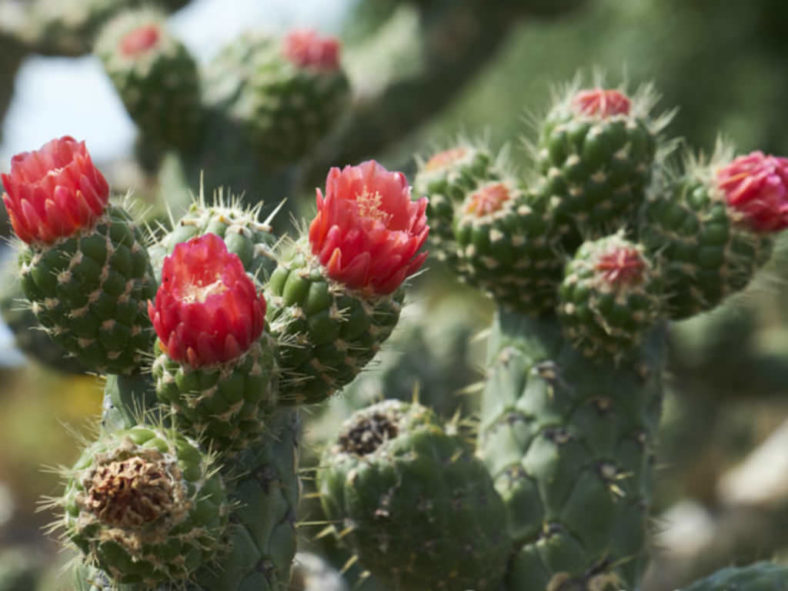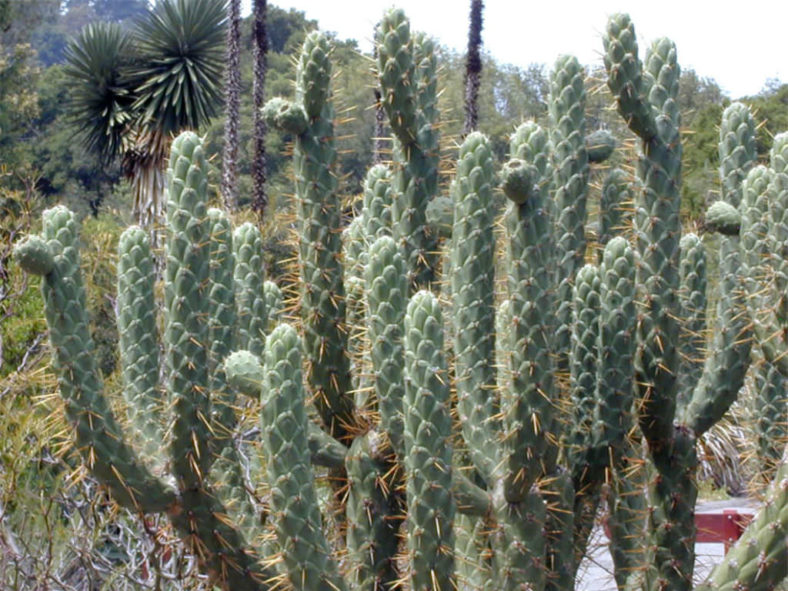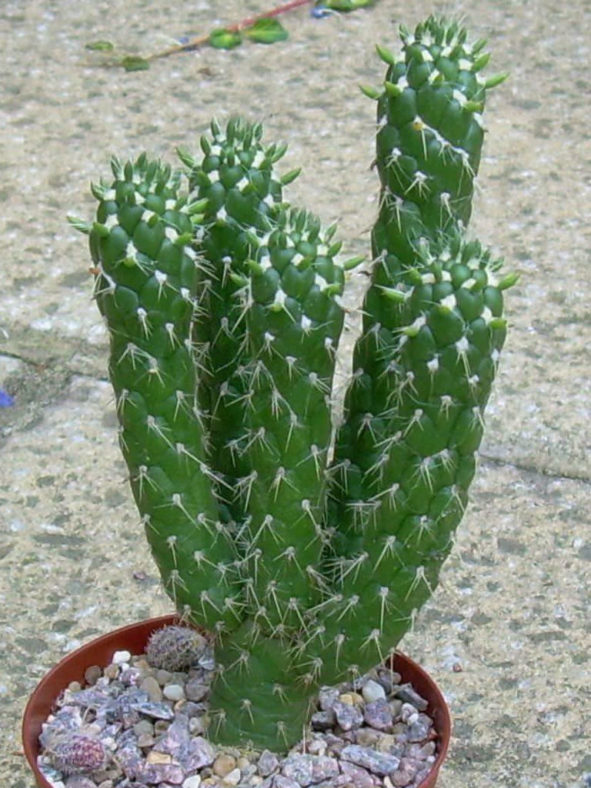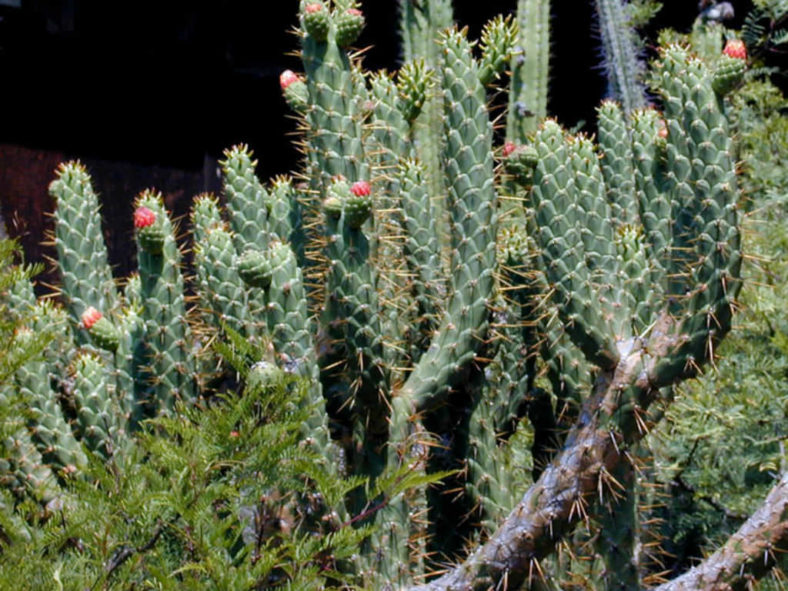Scientific Name
Austrocylindropuntia cylindrica (Lam.) Backeb.
Common Name(s)
Cane Cactus, Coral Cactus
Synonym(s)
Cactus cylindricus, Cereus cylindricus, Cylindropuntia cylindrica, Echinocactus cylindricus, Opuntia cylindrica
Scientific Classification
Family: Cactaceae
Subfamily: Opuntioideae
Tribe: Austrocylindropuntieae
Genus: Austrocylindropuntia
Origin
Austrocylindropuntia cylindrica is native to Colombia, Ecuador, and Peru. It has been introduced to the Canary Islands, Morocco, Algeria, Eritrea, Ethiopia, South Africa, Australia, and New Zealand.
Description
Austrocylindropuntia cylindrica is a shrubby cactus or small tree with a woody trunk and dark green to bluish-green branch segments with distinct rhomboid tubercles and white-felted areoles that bear white to yellowish spines and sometimes a few long hairs. It is highly branched and can grow up to 13.1 feet (4 m) tall. The branch segments can reach a length of 10 inches (25 cm) and a diameter of 2.4 inches (6 cm). They are topped with green, nearly cylindrical leaves measuring up to 0.6 inches (1.5 cm) long. The spines can grow up to 1.2 inches (3 cm) long. Each areole usually bears 2 to 6, sometimes up to 8, rounded to slightly flattened spines.
The flowers are red, with elongate pericarpels with glochid-bearing areoles, and can reach a diameter of 3.8 inches (7 cm). The green-yellow fruits are urn-shaped and contain many seeds covered with a hard coat. They can grow up to 3.6 inches (9 cm) long.

Hardiness
USDA hardiness zone 9a to 10b: from 20°F (−6.7°C) to 40°F (4.4°C).
How to Grow and Care
Though the large variety of species within the Opuntia genus means different types of prickly pears may need slightly different care, all are desert cacti requiring lots of sun, light, and water. So if you live in a hot, arid area, these plants can generally be planted outside, left alone, and enjoyed.
As desert cacti, Prickly Pears require maximum sunlight to thrive and should be kept in direct sunlight whenever possible. Very little water is needed. These drought-resistant plants grow best in hot, dry areas, and excessive water could cause them to rot. Hot temperatures are best, but these cacti will tolerate a wide range of temperatures. The most important soil requirement for Opuntia is that it drains well. Basic potting soil is fine, and these cacti will also grow in rock gardens.
Though Opuntia will grow just fine in a garden, they can also be grown in pots. To repot, ensure the soil is dry, remove the pot, and remove the old soil. After treating any cuts with fungicide, place the prickly pear in a new pot and backfill it with potting soil. As with a new cutting, do not water a newly repotted prickly pear briefly to avoid rotting its roots.
See more at How to Grow and Care for Opuntia.
Links
- Back to genus Austrocylindropuntia
- Succupedia: Browse succulents by Scientific Name, Common Name, Genus, Family, USDA Hardiness Zone, Origin, or cacti by Genus
Photo Gallery
Click on a photo to see a larger version.


